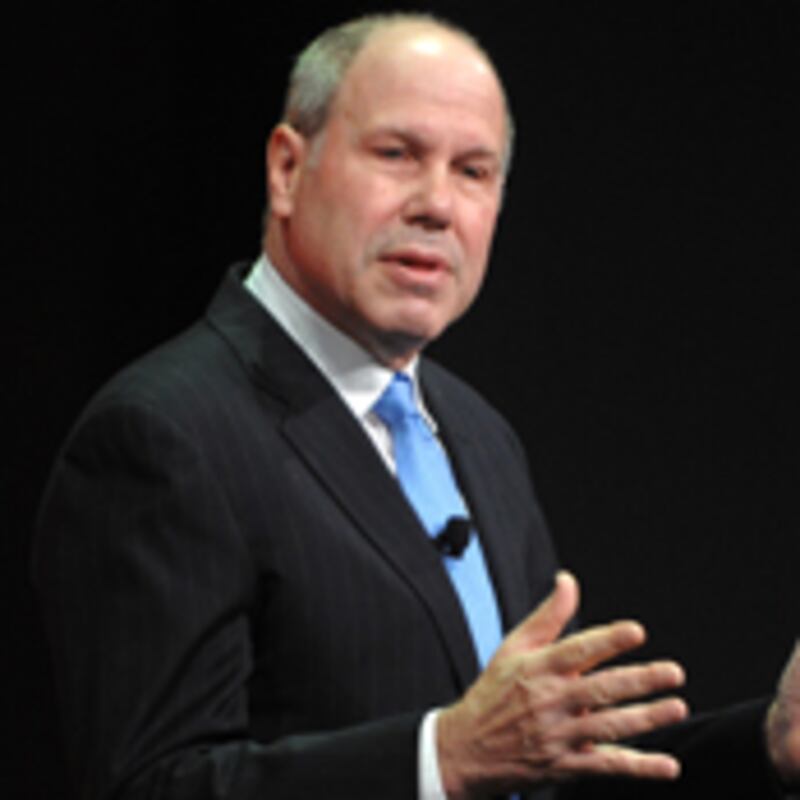
Hollywood was buzzing yesterday about reports that Michael Eisner, former ruler of the Magic Kingdom that is Disney, might return to the media world through the dowdiest of media industries: newspapers. But while it may seem odd to install Eisner as chairman of the Tribune Co. once it emerges from bankruptcy given his lack of print-based media experience, I can count at least four reasons why it makes perfect sense.
First, keep in mind that for all the attention derived from the flagship Chicago Tribune, the Los Angeles Times and other newspapers, Tribune’s money flows mostly from its stable of 23 television stations, and Eisner’s expertise could certainly be used to improve that area of the business. It was Eisner who not only negotiated the blockbuster $19 billion deal to acquire ABC/Capital Cities at Sun Valley in 1995, but also quieted critics of the deal who said Disney had no business being in television by leading ABC to its largest era of growth.
Despite being an old-media creation, Eisner has shown an unexpected acumen for creating digital content.
Second, despite being an old-media creation, Eisner has shown an unexpected acumen for creating digital content. He scored one of the online video world’s earliest, professionally produced, scripted successes with the viral hit, “Prom Queen.” While that show itself didn’t make money, Eisner suggested in a New York Times story last year that the digital studio behind the hit, Vuguru, was profitable. (Eisner still has a knack for creating television content as well, scoring a hit for Disney rival, Nickelodeon, with the animated show Glenn Martin, DDS last year.
Third, Eisner, who is so old-school he still writes out ideas on loose-leaf paper or, in lieu of that, the back of napkins, is a nostalgia junkie who believes that past brands can be successfully revived for the new millennium. Indeed, the guiding principle behind the $385 million acquisition of trading-card company Topps by Eisner’s investment firm, Tornante, in 2007 was that Bazooka Joe—the kid in the comic strip wrapped around the gum, which was part of the Topps deal—could be a character in movies, TV shows, and Internet productions for a new generation of children. He went so far as to call Bazooka Joe his “new Mickey Mouse” in an interview with USA Today. Though newspapers are a different media with unique challenges, Tribune does own some of the ink industry’s most reputable and prominent brands.
Finally, there’s the personal reason. As the Los Angeles Times noted, Eisner has a deep personal connection to John Angelo, the founder of one of Tribune’s largest debtholders, the hedge fund Angelo, Gordon & Co. A chapter in Eisner’s upcoming book— Working Together: Why Great Partnerships Succeed—is devoted to the hedge fund, with the former Disney CEO saying that he knows Angelo “as well as perhaps anyone, aside from my own wife and children.”
The talks with Tribune, which are described as “exploratory” in nature, may not come to fruition for quite some time. Before anything can happen with Eisner, Angelo, Gordon and Tribune’s other creditors first must agree to a reorganization plan that allows the company to emerge from bankruptcy, which it initially filed for in 2007. Given the acrimony between the two sides—the latest round of negotiations collapsed last week and there’s still the potential for litigation if a settlement cannot be reached—it’s unlikely that the situation will come to a swift resolution.
But if it ever did, Eisner would be stepping into the kind of situation most executives covet: a company where the predecessor—in this case, real-estate magnate Sam Zell—is widely seen as performing horridly. When I reached Eisner via email yesterday, he responded that he was working on the introduction to his book, and there was nothing to say right now. Sounds like a man keeping the option wide open.
Peter Lauria is senior correspondent covering business, media, and entertainment for The Daily Beast. He previously covered music, movies, television, cable, radio, and corporate media as a business reporter for the New York Post. His work has also appeared in Avenue, Blender, Black Men, and Media Magazine.






